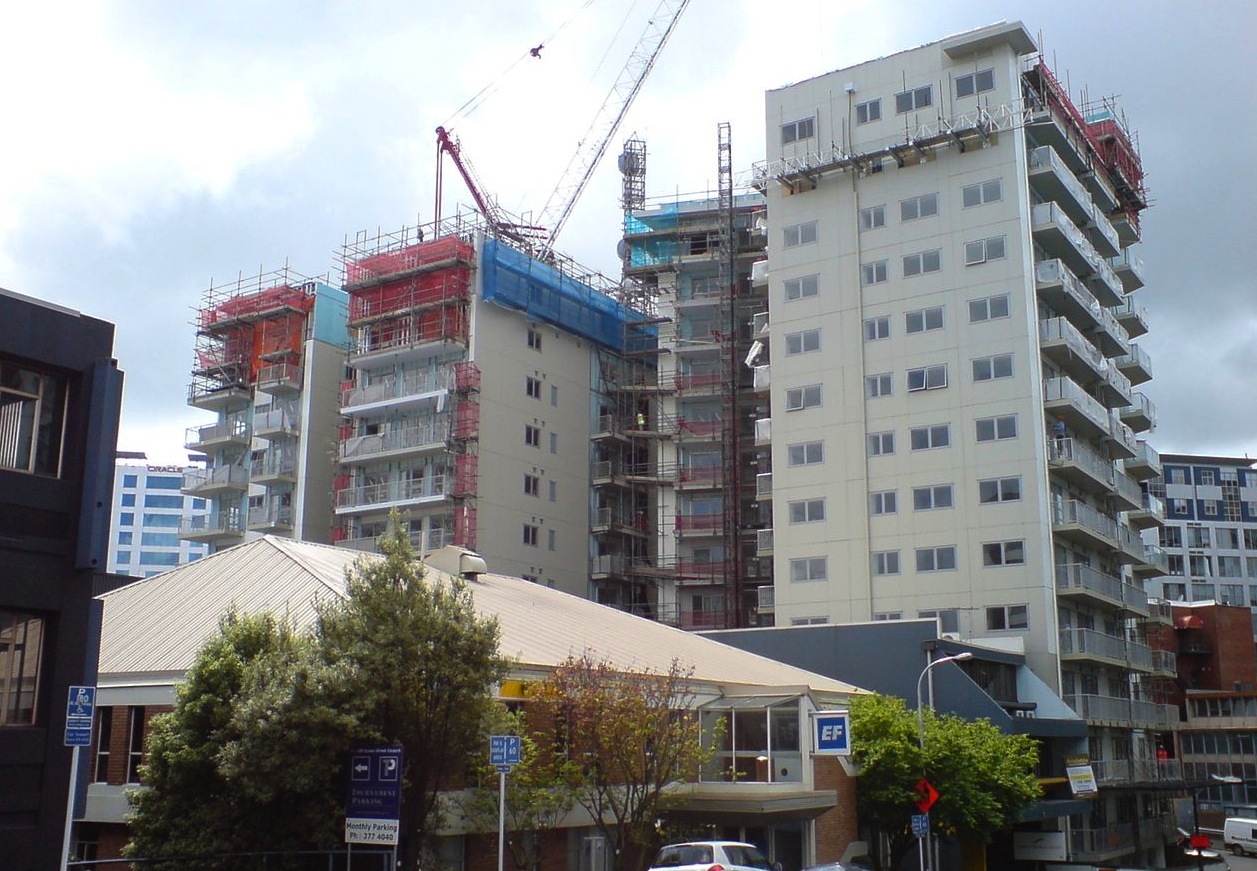By the end of 2015, 49 of 54 U.S. markets tracked by CoStar Group, the commercial real estate research firm, are expected to see their apartment vacancy rates increase.
That would suggest that supply in the multifamily sector is catching up with—or in several markets surpassing—demand. Last year, the 340,000 multifamily units started represented the highest level of construction since the 1980s. And some 20,000 new apartments are expected to come online in both Dallas and Denver alone this year.
Yet, despite the threat of oversupply there appears to be a consensus emerging, that positive demographic and economic forces could keep multifamily demand robust—and construction humming—at least through 2016.
The ever-optimistic National Association of Home Builders, for example, forecasts 358,000 multifamily starts in 2015, a level that Robert Denk, NAHB’s senior economist, thinks is “healthy and sustainable.” He told Multifamily Housing News recently that he expects that construction level to be maintained “for the next couple of years.” Denk also expects the country’s economic growth rates to be “high” in 2016.
In its Fourth-Quarter and Year-End 2014 Report, CoStar acknowledges that developers may need to “dial back” new construction after 2015 to keep vacancies (which ended last year at their lowest point in 10 years) and rents at healthy levels. CoStar estimates that new supply could push vacancy rates to 5.5% by the end of 2015.
On the other hand, today’s renter cohort, comprised largely of Millennials, “will take longer to transition into home buying than any demographic group in the last 30 years—obviously a good trend for apartment owners,” says CoStar. The research firm also foresees a 2-million-person increase in Millennial employment over the next few years, resulting in 1.53 million new households. “Apartment investors will find plenty of demand for new product.”
While some renters eventually will start families and relocate to homes in the suburbs, “a larger share of older households will be in the rental market,” mostly for lifestyle reasons. CoStar expects landlords to make a concerted effort to address the needs of renters as they age.
Multifamily as an asset class now exceeds $3 trillion, according to Andrew Florance, Founder and CEO of CoStar Group, which has detailed information on over 450,000 apartment properties in its database, the industry’s largest. More than 100 million Americans now rent, and 30 million people move annually. On Feb. 17, CoStar re-launched Apartments.com, its website for online searches of apartments, condos, and rental homes. Florance projects that, based on anticipated demand, within the next 10 years CoStar Group could achieve $550 million in annual revenue and $250 million in annual cash flow from this site.
CoStar will invest $75 million into marketing Apartments.com in 2015, a multimedia campaign that is scheduled to kick off on March 1.
Related Stories
| May 30, 2014
MIT researchers create 'home in a box' transformable wall system for micro apartments
Dubbed CityHome, the system integrates furniture, storage, exercise equipment, lighting, office equipment, and entertainment systems into a compact wall unit.
| May 30, 2014
Developer will convert Dallas' storied LTV Building into mixed-use residential tower
New Orleans-based HRI Properties recently completed the purchase of one of the most storied buildings in downtown Dallas. The developer will convert the LTV Building into a mixed-use complex, with 171 hotel rooms and 186 luxury apartments.
| May 29, 2014
7 cost-effective ways to make U.S. infrastructure more resilient
Moving critical elements to higher ground and designing for longer lifespans are just some of the ways cities and governments can make infrastructure more resilient to natural disasters and climate change, writes Richard Cavallaro, President of Skanska USA Civil.
| May 29, 2014
Wood advocacy groups release 'lessons learned' report on tall wood buildings
The wood-industry advocacy group reThink Wood has released "Summary Report: Survey of International Tall Wood Buildings," with informatino from 10 mid-rise projects in Europe, Australia, and Canada.
| May 28, 2014
Moshe Safdie's twin residential towers in Singapore will be connected by 'sky pool' 38 stories in the air [slideshow]
Moshe Safdie's latest project, a pair of 38-story luxury residential towers in Singapore, will be linked by three "sky garden" bridges, including a rooftop-level bridge with a lap pool running the length between the two structures.
| May 27, 2014
America's oldest federal public housing development gets a facelift
First opened in 1940, South Boston's Old Colony housing project had become a symbol of poor housing conditions. Now the revamped neighborhood serves as a national model for sustainable, affordable multifamily design.
| May 23, 2014
Big design, small package: AIA Chicago names 2014 Small Project Awards winners
Winning projects include an events center for Mies van der Rohe's landmark Farnsworth House and a new boathouse along the Chicago river.
| May 22, 2014
No time for a trip to Dubai? Team BlackSheep's drone flyover gives a bird's eye view [video]
Team BlackSheep—devotees of filmmaking with drones—has posted a fun video that takes viewers high over the city for spectacular vistas of a modern architectural showcase.
| May 22, 2014
NYC's High Line connects string of high-profile condo projects
The High Line, New York City's elevated park created from a conversion of rail lines, is the organizing principle for a series of luxury condo buildings designed by big names in architecture.
| May 20, 2014
Kinetic Architecture: New book explores innovations in active façades
The book, co-authored by Arup's Russell Fortmeyer, illustrates the various ways architects, consultants, and engineers approach energy and comfort by manipulating air, water, and light through the layers of passive and active building envelope systems.
















